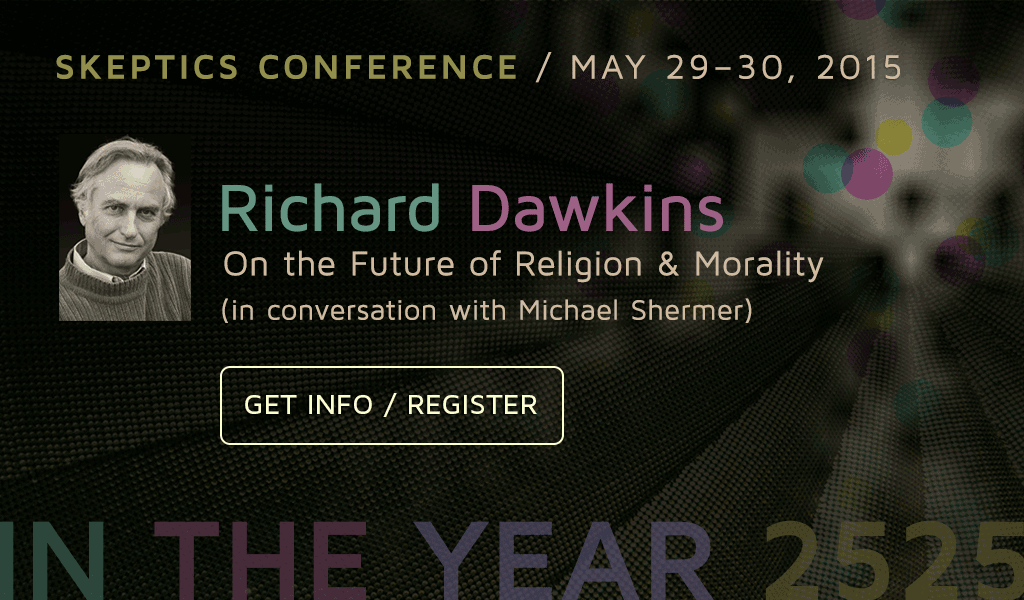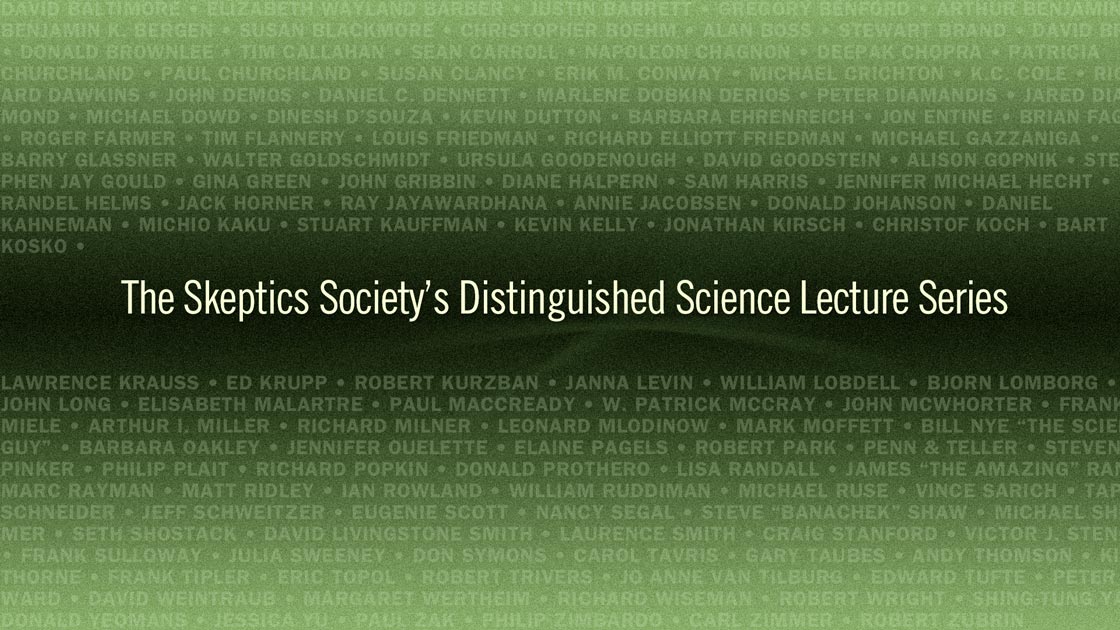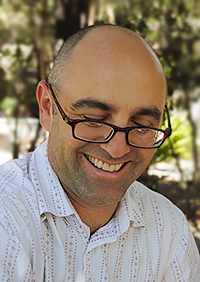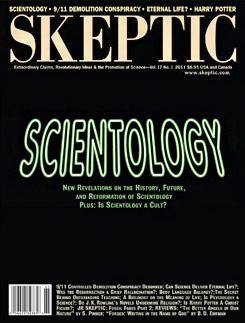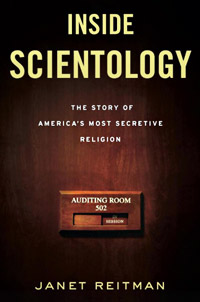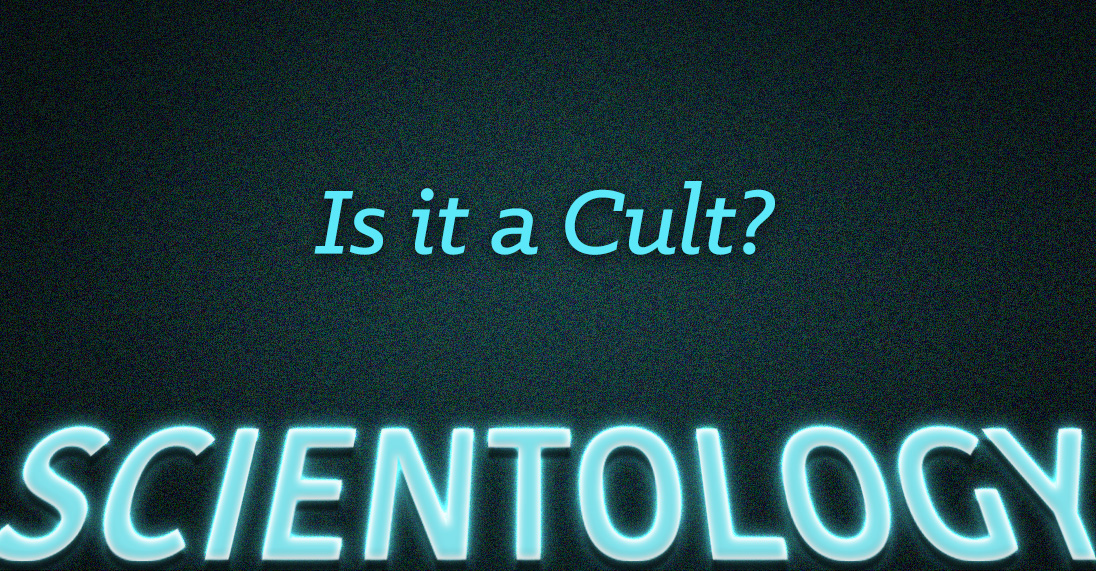
On the heels of Sunday’s HBO documentary film by Alex Gibney, Going Clear, in this week’s eSkeptic we present an article by Dr. Michael Shermer from Skeptic magazine 17.1 on the cult-like nature of Scientology. Never was this facet of the so-called (by sociologists of religion) “new religious movement” (NRM) more evident than in this powerful and disturbing portrayal of the Church of Scientology (COS), created by the science-fiction writer L. Ron Hubbard, in part, to avoid paying taxes. As Shermer noted in his Scientific American column of November 2011:
I recently interviewed the acclaimed science fiction author Harlan Ellison, who told me he was there at the birth of Scientology. At a late 1940s meeting in New York of a science fiction writer’s group called the Hydra Club, Hubbard was complaining to L. Sprague de Camp and the others about writing for a penny a word. “Lester Del Ray then said half jokingly, ‘What you really ought to do is create a religion because it will be tax free,’ and at that point everyone in the room started chiming in with ideas for this new religion. So the idea was a Gestalt that Ron caught on to and assimilated the details. He then wrote it up as ‘Dianetics: A New Science of the Mind’ and sold it to John W. Campbell, Jr., who published it in Astounding Science Fiction in 1950.”
One of the more dramatic moments in Gibney’s film was when the COS faced off against the IRS to solidify its tax-free status as a religion, the loss of which could mean the payment of back taxes and penalties of up to a billion dollars, thereby bankrupting the church. Unbelievably, the IRS caved in to the pressures of the COS’s relentless lawsuits—numbering in the thousands—filed by the church against one of the most powerful government agencies in existence. Not so glorious were examples of the psychopathic nature of the COS leadership in their treatment of church employees, volunteers, and especially anyone who criticized the church, most especially apostates who left the COS and dared to reveal its inner workings to outsiders, most notably journalists. Such “SPs” (Suppressive Persons) were to be ruined utterly.
The features of a cult, outlined by Dr. Shermer in this article, are evident throughout Gibney’s film and in Lawrence Wright’s book, Going Clear, upon which the film was based.
Dr. Michael Shermer is the Publisher of Skeptic magazine, a monthly columnist for Scientific American, a Presidential Fellow at Chapman University, and the author of The Moral Arc: How Science and Reason Lead Humanity toward Truth, Justice, and Freedom. His previous books include: The Believing Brain, Why People Believe Weird Things, Why Darwin Matters, The Mind of the Market, How We Believe, and The Science of Good and Evil.
Is Scientology a Cult?
by Michael Shermer
The Jet Propulsion Laboratory in Southern California is the home of many of the world’s leading scientists and engineers who launch spacecraft deep into the solar system to find out what’s out there. Apparently they could save taxpayers a lot of money if they simply employed a different kind of science practiced by Scientologists, as described to me by one such rocket scientist once employed there:
I was working at JPL, and my immediate supervisor was a dedicated Scientologist. This supervisor had just advanced from Clear to OT I. Some people at a meeting asked him what this meant, and he explained that he now had the ability to detach his thetan from his body and cause it to perform useful out-of-body functions. For example, if he needed to purchase a certain item and he drove past a store that might or might not have that item, he could send his thetan into the store to look for the item. If the thetan reported the item was in stock, my boss would then park the car and go in and buy it. Unfortunately for JPL there was a senior NASA official in the audience. The official noted that NASA was about to spend hundreds of millions of dollars to send another robotic spacecraft to Mars. He asked if my supervisor would be willing to send his thetan to Mars to gather the needed data, presumably at lower cost. The supervisor replied that this could in fact be done, and that other OT’s from the Hollywood church would probably offer their services too. JPL was severely criticized by NASA, and warned of serious consequences if this got into the newspapers.
The thetan reference stems from Scientology’s genesis story that is only revealed after parishioners (a.k.a. customers) pay tens of thousands of dollars to reach Operating Thetan Level III. This science fiction UFO fantasy story is now so widely known that it was even featured in a 2005 episode of the animated sitcom television series South Park. Around 75 million years ago Xenu, the story begins, the ruler of a Galactic Confederation of 76 planets, transported billions of his charges in spaceships similar to DC-8 jets to a planet called Teegeeack (Earth). He then vaporized them with Hydrogen bombs, scattering to the winds their souls, called thetans, which were then rounded up in electronic traps and implanted with false ideas. These corrupted thetans are still around and can attach themselves to people today, leading to drug and alcohol abuse, addiction, depression, and other psychological and social ailments that only Scientology “auditing” employing Electropsychometers (E-meters) and numerous associated classes can cure.
As a student of religion, curious about the genesis of such genesis stories, I tracked down the origin of the Xenu tale through the acclaimed author Harlan Ellison, who told me he was there at the birth of Scientology. At a late 1940s meeting in New York of a science fiction writer’s group called the Hydra Club, then science fiction writer L. Ron Hubbard was complaining to L. Sprague de Camp and the other club members about writing for a penny a word. “Lester del Rey then said half jokingly, ‘What you really ought to do is create a religion because it will be tax free,’ and at that point everyone in the room started chiming in with ideas for this new religion. So the idea was a Gestalt that Ron caught on to and assimilated the details. He then wrote it up as ‘Dianetics: A New Science of the Mind’ and sold it to John W. Campbell, Jr., who published it in Astounding Science Fiction in 1950.”
Astounding indeed that anyone would accept such science fiction as fact, but such is the power of belief when coupled to a handful of powerful psychological principles. Consider cognitive dissonance, discovered by the psychologist Leon Festinger in 1954 when he joined a UFO end-of-the-world cult on a mountain top to record what would happen when the mothership failed to arrive at the designated midnight hour on December 21st. Festinger saw this as an opportunity to study the phenomenon of mental tension created when someone holds two conflicting thoughts simultaneously:
Suppose an individual believes something with his whole heart; suppose further that he has a commitment to this belief, that he has taken irrevocable actions because of it; finally, suppose that he is presented with evidence, unequivocal and undeniable evidence, that his belief is wrong: what will happen? The individual will frequently emerge, not only unshaken, but even more convinced of the truth of his beliefs than ever before. Indeed, he may even show a new fervor about convincing and converting other people to his view.
That is exactly what happened with the UFO cult, whose members reduced the dissonance triggered by the failed prophecy by going out into the community to recruit new members. The greater the cost, the higher the gain on the dissonance dial that can only be assuaged by further reinforcing the veracity of the belief, no matter how preposterous it may seem to outsiders who do not share the dissonance given their skepticism. So it is with Scientology, whose members pay a high price indeed in every sense of that word.
Is Scientology a Cult?
First, though it is recognized by the IRS as a tax-exempt religion, no other religion that I know of considers their theological doctrines and core religious tenets to be intellectual property accessible only for a fee. Envision converting to Judaism but having to pay for courses in order to hear the story of Abraham and Isaac, Noah and the flood, or Moses and the Ten Commandments. Or imagine joining the Catholic Church but not being told about the crucifixion and the resurrection until you have reached Operating Theological Level III, which can only be attained after many years and tens of thousands of dollars in churchrun courses. That is, in essence, how the Church of Scientology dispenses its theology.
Second, a sociological definition of a cult is that it is a group with novel religious beliefs and a high degree of tension with the surrounding society (as contrasted with a sect, or a group with traditional religious beliefs and a high degree of tension with the surrounding society). The great sociologist of religion Rodney Stark has noted that most religions start out as cults, then either die out or become sects, which in turn either die out or transition into a mainstream religion.
Third, consider these characteristics of a cult:
- Veneration of the Leader: Excessive glorification of the leader to the point of virtual sainthood or divinity.
- Inerrancy of the Leader: Belief that the leader cannot be wrong in pronouncements on virtually all subjects, from existential to trivial.
- Dissent is Discouraged: Questioning and doubt among members is punished.
- Absolute Truth: Belief that the leader and/or group has a method of discovering final knowledge on any and all subjects.
- Absolute Morality: Belief that the leader and/or the group have developed a system of right and wrong thought and action applicable to members and nonmembers alike.
- In-Group/Out-Group Mentality: Polarization of members and nonmembers into “us v. them”.
- Ends Justify the Means: Leads to members doing things they would have considered reprehensible or unethical before joining the group.
- Deceit and Hidden Agendas: Potential recruits and the public are not given a full disclosure of the true nature of the group’s beliefs and plans, and flaws of the leader or potentially embarrassing events in the group’s history are covered up.
- Financial and/or Sexual Exploitation: Recruits and followers are persuaded to invest in the group, and the leader may develop sexual relations with one or more of the followers.
- Mind-Altering Practices: Meditation, chanting, speaking in tongues, denunciation sessions, and debilitating work routines are used to reinforce group think.
- Lack of Accountability: The group and leader are not accountable to any outside authorities.
- Isolation from Friends and Family: Normal reality checks are blocked for members.
- Aggressive Recruitment Practices: Members are strongly encouraged to bring in new members and raise money for the group.
- Persuasive Techniques: Special psychological methods are employed to recruit new followers and reinforce beliefs.
Fourth, compare this list with these noteworthy facts about Scientology as documented and described by the investigative journalist Janet Reitman in her 2006 Rolling Stone magazine article and subsequently her 2011 book, Inside Scientology:
- Scientology’s founder L. Ron Hubbard defined it as “the study of truth.”
- Scientology calls itself “the world’s fastest-growing religion” with 10 million members in 159 countries and more than 6,000 Scientology churches, missions and outreach groups across the globe. In fact, a 2001 survey conducted by the City University of New York found only 55,000 people in the United States who claimed to be Scientologists. Worldwide, some observers believe a reasonable estimate of Scientology’s core practicing membership ranges between 100,000 and 200,000.
- Scientology’s holdings, which include real estate on several continents, are widely assumed to value in the billions of dollars.
- Scientology’s practices and processes are highly controlled, and, at the advanced levels, highly secretive.
- Unique among religions, Scientology withholds key aspects of its central theology from all but its most exalted followers. This would be akin to the Catholic Church refusing to tell all but a select number of the faithful that Jesus Christ died for their sins.
- Members are isolated and live in a parallel world with the secular world.
- Scientology has its own nomenclature, guidelines for living, and ethical code that it enforces.
- The Bridge to Total Freedom is the goal, and it is expensive: Auditing is purchased in 12.5-hour blocks, known as “intensives.” Each intensive can cost anywhere from $750 for introductory sessions to between $8,000 and $9,000 for advanced sessions. People spend 10s to 100s of thousands of dollars in auditing.
Is Scientology a cult? You be the judge. There is no scientifically-determined number of characteristics from the list that establishes the diagnostic label, but as you read the Skeptic magazine cover story on Scientology and as you read and hear about Scientology in the news, you might recall some of these salient points. In my opinion, if Scientology is not a cult, then nothing is a cult and the term has no meaning. ![]()


